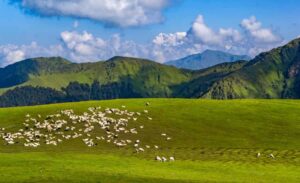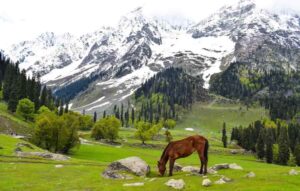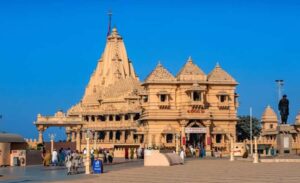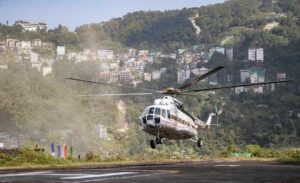Best Time To Visit Valley Of Flowers
The Valley of Flowers, nestled in the breathtaking Himalayan region of Uttarakhand, India, is a UNESCO World Heritage Site known for its stunning alpine meadows, vibrant floral display, and diverse biodiversity. If you are planning a visit to this enchanting valley, it is crucial to choose the right time to ensure a memorable and enjoyable experience. The Valley of Flowers experiences distinct seasons, each offering a unique perspective of its natural beauty. In this comprehensive guide, we will explore the best time to visit the Valley of Flowers, taking into consideration the weather, temperature, and different seasons that shape the landscape.
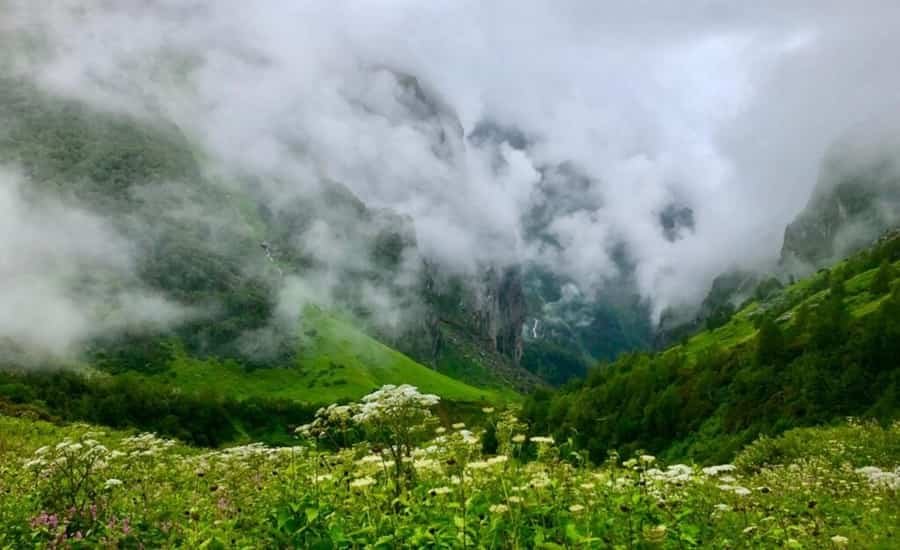
Spring (May to June)
Weather
- Spring marks the beginning of the tourist season in the Valley of Flowers. During May and June, the weather is generally pleasant, with daytime temperatures ranging from 15 to 20 degrees Celsius (59 to 68 degrees Fahrenheit). The snow from the winter season begins to melt, giving rise to a spectacular display of colorful flowers.
Floral Bloom
- This period witnesses the valley coming to life with a riot of colors as a multitude of flowers bloom. The meadows are adorned with a carpet of flowers like orchids, poppies, marigold, daisies, and many more. The fragrance and vibrant hues make it a paradise for nature lovers and photographers.
Wildlife
- Spring is also an ideal time for wildlife enthusiasts, as several species of butterflies and birds become active. You may spot Himalayan monal, red foxes, and various other avian species.
Tips
- Carry light woolens and comfortable trekking gear.
- Stay hydrated and use sunscreen as the sun can be intense at higher altitudes.
Monsoon (July to August)
Weather
- The monsoon season, from July to August, brings heavy rainfall to the region. While the valley is in full bloom during this time, the weather can be unpredictable, with frequent rain showers and cloudy skies. Daytime temperatures range between 12 to 18 degrees Celsius (54 to 64 degrees Fahrenheit).
Floral Bloom
- The monsoon enhances the lushness of the valley, with flowers in full bloom. The landscape transforms into a verdant paradise, but trekking conditions can be challenging due to slippery paths.
Wildlife
- Despite the rain, this season offers a chance to witness the unique charm of the valley, with waterfalls cascading down the mountainsides. However, leeches and slippery trails can make trekking a bit difficult.
Tips
- Bring waterproof gear, including rain jackets and trekking shoes with good grip.
- Be cautious of leeches and take necessary precautions.
Autumn (September to October)
Weather
- Post-monsoon, the weather becomes clear and pleasant during September and October. Daytime temperatures range between 10 to 15 degrees Celsius (50 to 59 degrees Fahrenheit). This period is considered one of the best times to visit the Valley of Flowers.
Floral Bloom
- While some flowers continue to bloom, the landscape undergoes a subtle change with autumn hues setting in. The clear skies provide stunning views of the surrounding peaks.
Wildlife
- Wildlife activity remains relatively high during this time, and you may still encounter various species of birds and butterflies.
Tips
- Carry layers of clothing, as temperatures can vary throughout the day.
- Enjoy the picturesque landscapes and clear views of the Himalayan range.
Pre-Winter (Late October to November)
Weather
- As winter approaches, temperatures start to drop, and daytime temperatures range between 5 to 10 degrees Celsius (41 to 50 degrees Fahrenheit). The nights can be chilly, and there is a possibility of the first snowfall.
Floral Bloom
- The floral display begins to fade, but the landscape retains its charm with the snow-capped peaks in the background. The changing colors of the foliage add to the visual appeal.
Wildlife
- Wildlife sightings become less frequent as many species start preparing for the winter months.
Tips
- Dress in warm layers, including thermal wear, to stay comfortable in the cooling temperatures.
- Be prepared for the possibility of encountering snow at higher altitudes.
Winter (December to April)
Weather
- The winter season sees the Valley of Flowers covered in a blanket of snow. The temperatures during this period can drop significantly, ranging from -5 to 5 degrees Celsius (23 to 41 degrees Fahrenheit).
Floral Bloom
- The valley is mostly inaccessible during winter, with the flowers in a dormant state. However, the snow-covered landscape offers a different kind of beauty for those seeking a tranquil and serene experience.
Wildlife
- Most wildlife retreats to lower altitudes, and the valley remains relatively quiet.
Tips
- Winter visits are not recommended for the casual tourist, as trekking conditions can be extremely challenging.
- This period is more suitable for experienced trekkers seeking a unique adventure in a snow-covered landscape.
Conclusion
Choosing the right time to visit the Valley of Flowers depends on personal preferences, ranging from witnessing the vibrant bloom of flowers in spring to experiencing the tranquility of a snow-covered landscape in winter. Each season brings its own set of charms, and the valley’s ever-changing beauty ensures a magical experience for every visitor. Whether you are a nature enthusiast, a trekking aficionado, or a photographer, the Valley of Flowers offers a captivating journey through its diverse seasons. Plan your visit wisely, and you will be rewarded with memories of a lifetime in this heavenly abode of nature.
Must Read:

